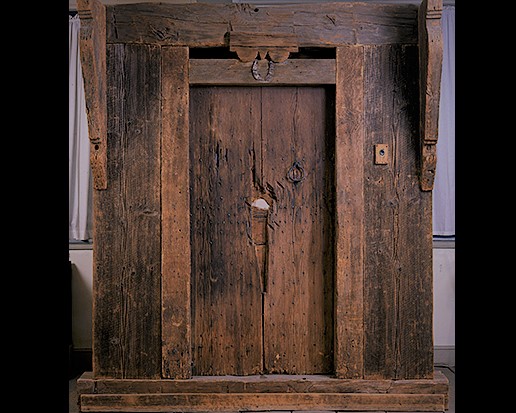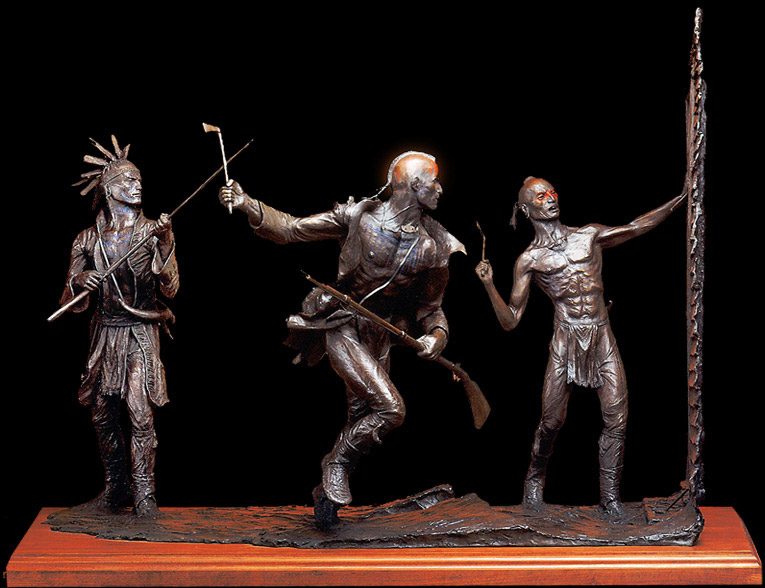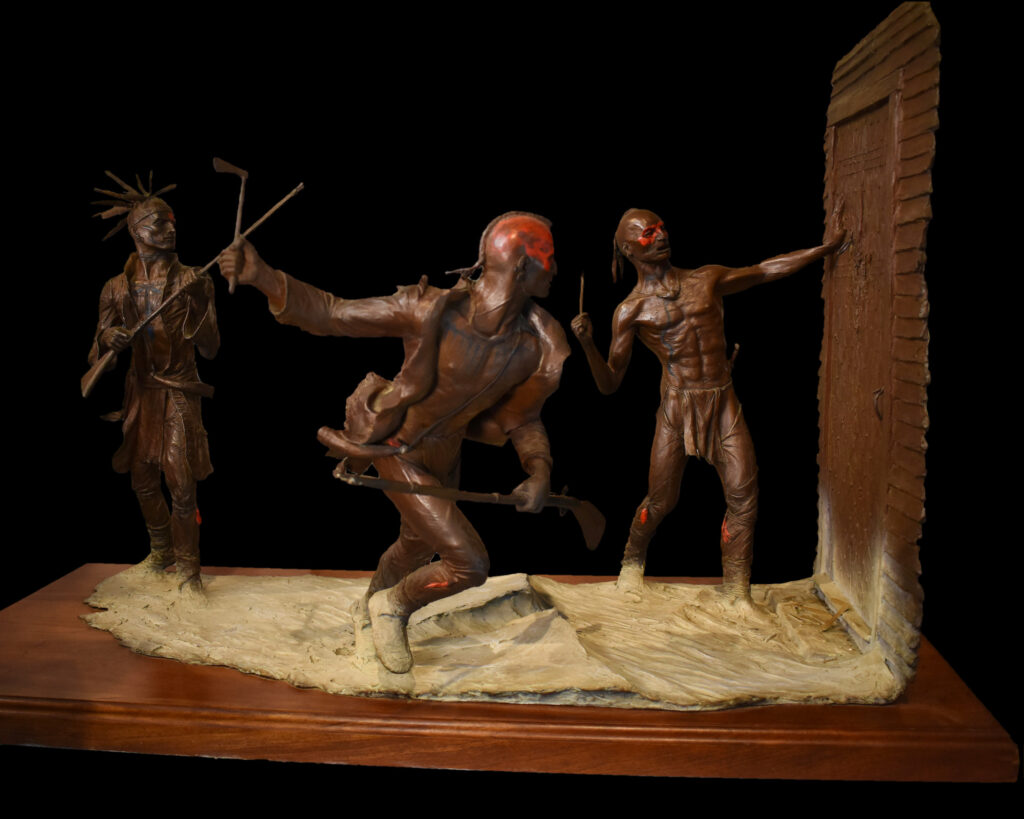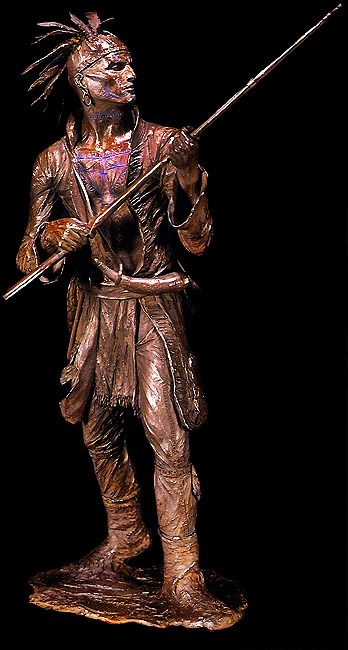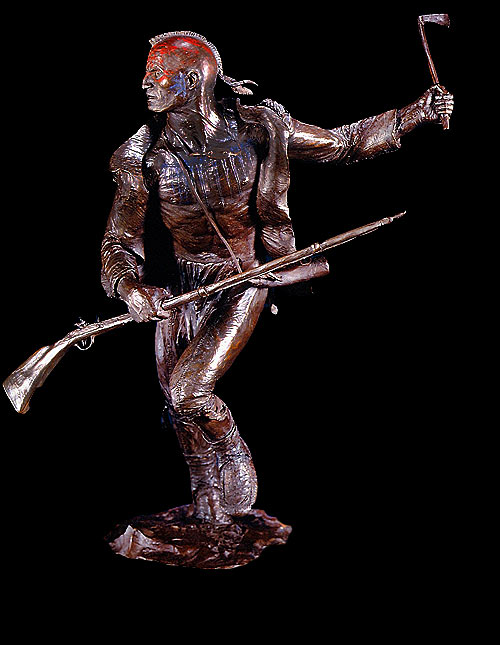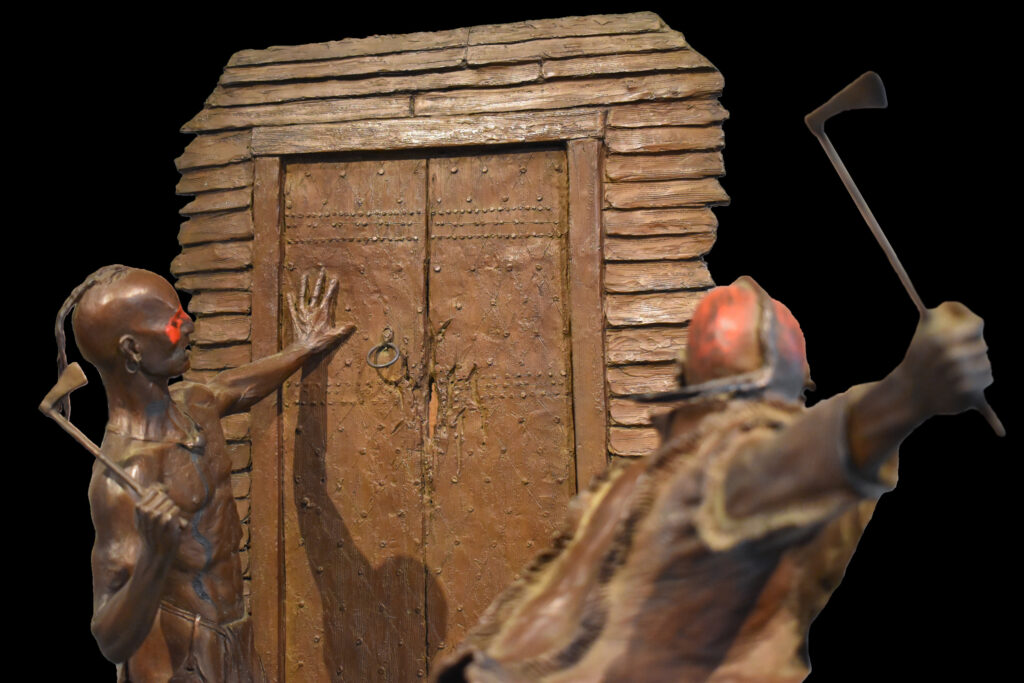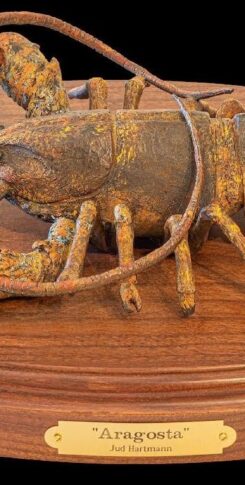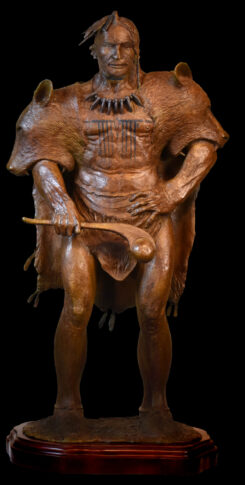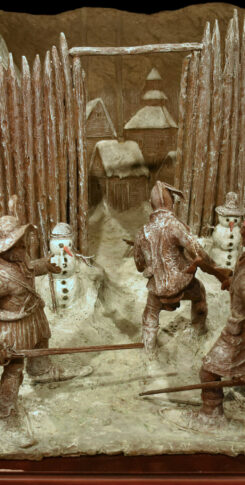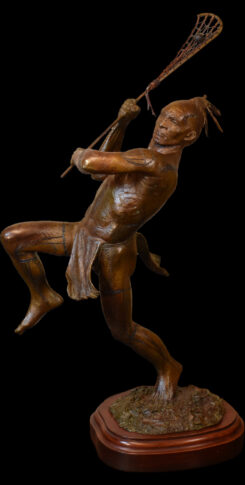Bronze edition: 15 | Length: 42″ | Height: 32″
“On the 29th of February 1704, not long before the break of day, the enemy came in like a flood upon us; our watch being unfaithful … they came to my house in the beginning of the onset, and by their violent endeavors to break open doors* and windows with their axes and hatchets, awakened me out of sleep; on which I leaped out of bed and running towards the door, perceived the enemy making entrance into the house … the enemy immediately brake into the room, I judge to the number of 20 with painted faces and hideous acclamations. I reached up my hands … for my pistol, uttering a short petition to God … expecting a present passage through the Valley of the Shadow of Death.”
Rev. John Williams,
“The Redeemed Captive”, 1707
“The enemy came in
like a flood upon us …”
Previously, the residents of Deerfield assumed themselves safe from attack with 3-4 ft. of snow separating them from the enemy 300 miles to the north – “No fear of Indian attack until oak leaves are the size of mouse’s ears,” the old maxim said. However, in a strange manner, a few days before the attack, was their vigilence reawakened. Young Ruth Catlin awoke terrified from sleep, to the muffled sound of many footsteps marching around the stockade. Waking her parents but hearing nothing themselves, she was reassured that it was but a bad dream. Not until the next morning did they discover, to their amazement, that the same dream was shared by nearly a dozen fellow townsmen, some of the leading citizens among them! A party was sent out to reconnoiter but found no sign in the snow. But, so impressed were they by the similarity of the dreams, that the minister called a special meeting to “discuss what this omen portended.” Clearly, God was warning them of an imminent attack.
Meanwhile, at about this time, an army of 350 French and Indians (made up of Caughnawaga Mohawks, Hurons from Lorette, and Abenaki), was moving toward Deerfield. Using dogsleds and the frozen Connecticut River as a highway, they were camped near present-day Brattleboro, Vt. Leaving their teams there, the bulk of the army marched overland on snowshoes and arrived on the outskirts of Deerfield on the evening of February 28th. Scouts were sent out and found that the snow had drifted to the very top of the north side of the stockade, affording easy access. All seemed favorable for success. In council, Thaovenhosen, the tall, impressive chief of the Hurons, devised the plan of attack: Just before first light he said, “March not steadily on the English fort, lest our footsteps crunching on the crust will awaken the sleeping foe and put him on his guard. Advance by a rush, then halt; then rush on, and halt again. The sound in the Englishman’s sleeping ears will seem but the north wind glowing in gusts.”
“Tired with his weary walking to and fro all night, trying hard to shake off the deadly drowsiness threatening to close heavy eyes, … the watchman chanced to hear in a house he was passing, a mother crooning a lullaby to a sick child. He stood still, leaning heavily against the window sill to listen. Soothed by the brooding song and by a sound, faintly heard, as of the wind coming in fitful gusts from the north, slumber stole upon him unawares.
“The aftermath: During the initial attack, about 48 colonists were killed, 140 escaped (many of these barefoot) and 109 were made captive. Of those captives about 21 were killed or died en route to Canada. Of the remaining number 61 were ransomed and eventually returned home including Rev. John Williams but 27 chose to stay. Many of these “unredeemed” captives became “Indians”. Eunice the 8 year old daughter of Rev. Williams was one of these. Marrying a Mohawk named Amrusus, she and her husband returned to Deerfield on the 40th anniversary of the attack in 1744 but could not be persuaded to remain. As the children of the tribe are given the last name of the mother, to this day Williams is a common last name among the Caughnawaga Mohawk. Eunice outlived all involved in the attack on Deerfield, dying in 1786 at the age of 90.”
M.P. Wells-Smith,
“The Boy Captive of Old Deerfield” (1904)
*The door in the sculpture with the hatchet marks and jagged hole is actually modeled after the original door from the attack that is on display in The Pocumtuc Valley Memorial Hall Museum in Deerfield, Massachusetts.
